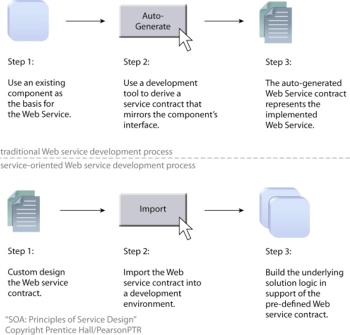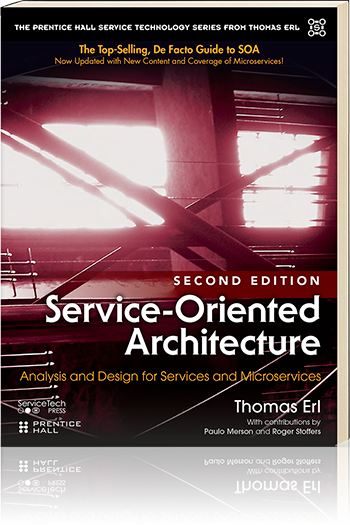SOA Patterns > Basics > What is SOA > Service-Oriented Computing in the Real World > Service-Oriented Design
Service-Oriented Design
The service-oriented design process uses a set of predefined service candidates from the service inventory blueprint as a starting point from which they are shaped into actual physical service contracts.
When carrying out service-oriented design, a clear distinction is made between service candidates and services. The former represents a conceptual service that has not been implemented, whereas the latter refers to a physical service.
As shown in the following figure, the traditional (non-standardized) means by which Web service contracts are generated results in services that continue to express the proprietary nature of what they encapsulate. Creating the Web service contract prior to development allows for standards to be applied so that the federated endpoints established by Web services are consistent and aligned.

Figure 1 – Unlike the popular process of deriving Web service contracts from existing components, SOA advocates a specific approach that encourages us to postpone development until after a custom designed, standardized contract is in place.
This “contract first” approach lies at the heart of service-oriented design and has inspired separate design processes for services based on different service models. For more information, visit SOA Methodology.

